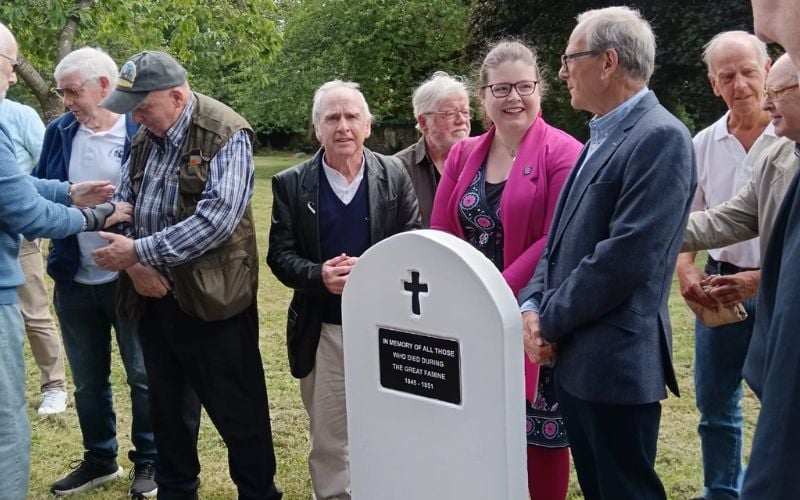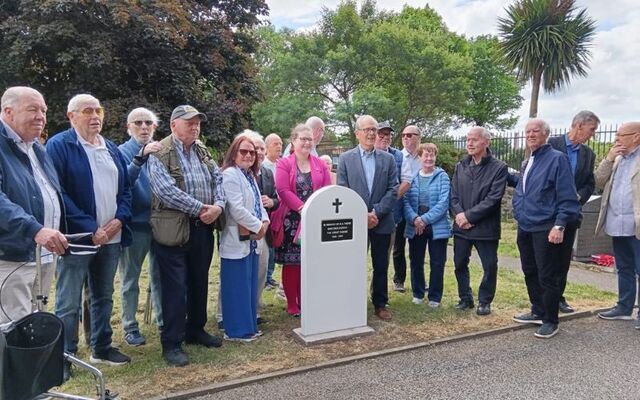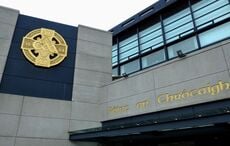The Shankill Area Social History Group dedicated a stone memorial to the victims of the Great Famine, just inside the gates of the Shankill Road Graveyard.
On Monday, a Great Hunger memorial was unveiled in the traditional loyalist area of Belfast.
Speaking at the event, Michael Caldwell, Chairman of the Shankill Area Social History group (SASH), introduced Anthony Russell, a member of the National Famine Commemoration Committee, who explained that the project developed from a talk on the Great Famine in Ulster he gave to SASH, before Covid.
Russell provided contemporary Quaker evidence of scenes of starvation during the Famine near Loughall, birthplace of the Orange Order.
He explained that pits were dug in the Shankill Graveyard "for the reception of the bodies of strangers who had no claim to any of the ground."
While the famine caused massive devastation in rural areas of the Republic of Ireland, particularly in the west and south, Belfast, and especially Shankill, experienced its impact indirectly but significantly, primarily through urban migration, poverty, and social transformation.
As starvation and eviction devastated rural communities, thousands fled to the cities in search of work, food, and shelter. Belfast saw a dramatic rise in population and the Shankill area was one of the neighborhoods that absorbed this influx. Many famine refugees arrived from Counties Antrim, Down, Armagh, and even as far as Connacht.

Center - Michael Caldwell, Chairman of SASH, Dr Robyn Atcheson of QUB and Anthony Russell, a member of the National Famine Commemoration Committee.
At the time of the famine, Belfast was booming economically, especially in textiles and shipbuilding. The Shankill area was closely associated with the linen industry. Many famine migrants, particularly women and children, found work in the linen mills around Shankill. The availability of labor helped fuel Belfast’s rise as the “Linen Capital of the World,” but it also led to exploitation and harsh working conditions. The influx of desperate workers helped keep wages low.
Though Belfast avoided widespread starvation, the wave of migration brought severe public health crises. Typhus, cholera, and dysentery spread rapidly in densely packed neighborhoods like Shankill. Poor housing, limited clean water, and overwhelmed charity systems created slum-like conditions. Deaths increased significantly in working-class areas during the peak famine years.
At the Monday event, Russell paid tribute to the members of SASH and especially Evan Bingham from the SASH group, who doggedly confronted all obstacles, over seven years, to make the installation of the Great Famine a reality.
Read more
Dr. Robyn Atcheson, a social historian and history communicator from Queen's University Belfast QUB, gave an informative, graphic and wonderfully detailed talk on Belfast in Black ’47.
Atcheson described how Belfast struggled to find room for the dead, how coffins were piled up in pits until there were only a few inches of soil covering them; how the better off recorded their own generosity rather than the inadequacy of the civic and religious response to the suffering of the poor and how they too could not avoid typhus and cholera.
Michael Blanch, the Chair of the Committee for the Commemoration of the Irish Famine Victims, unveiled the monument in the Shankill Graveyard. It is one of 50 paid for by the late Bill Fahy, a fireman from New York. The first was dedicated in Newry, by the late Pete St. John (the author of "The Fields of Athenry"), as part of the 2015 National Famine Commemoration – the first, and to date, the only time the National Commemoration crossed the border.




Comments